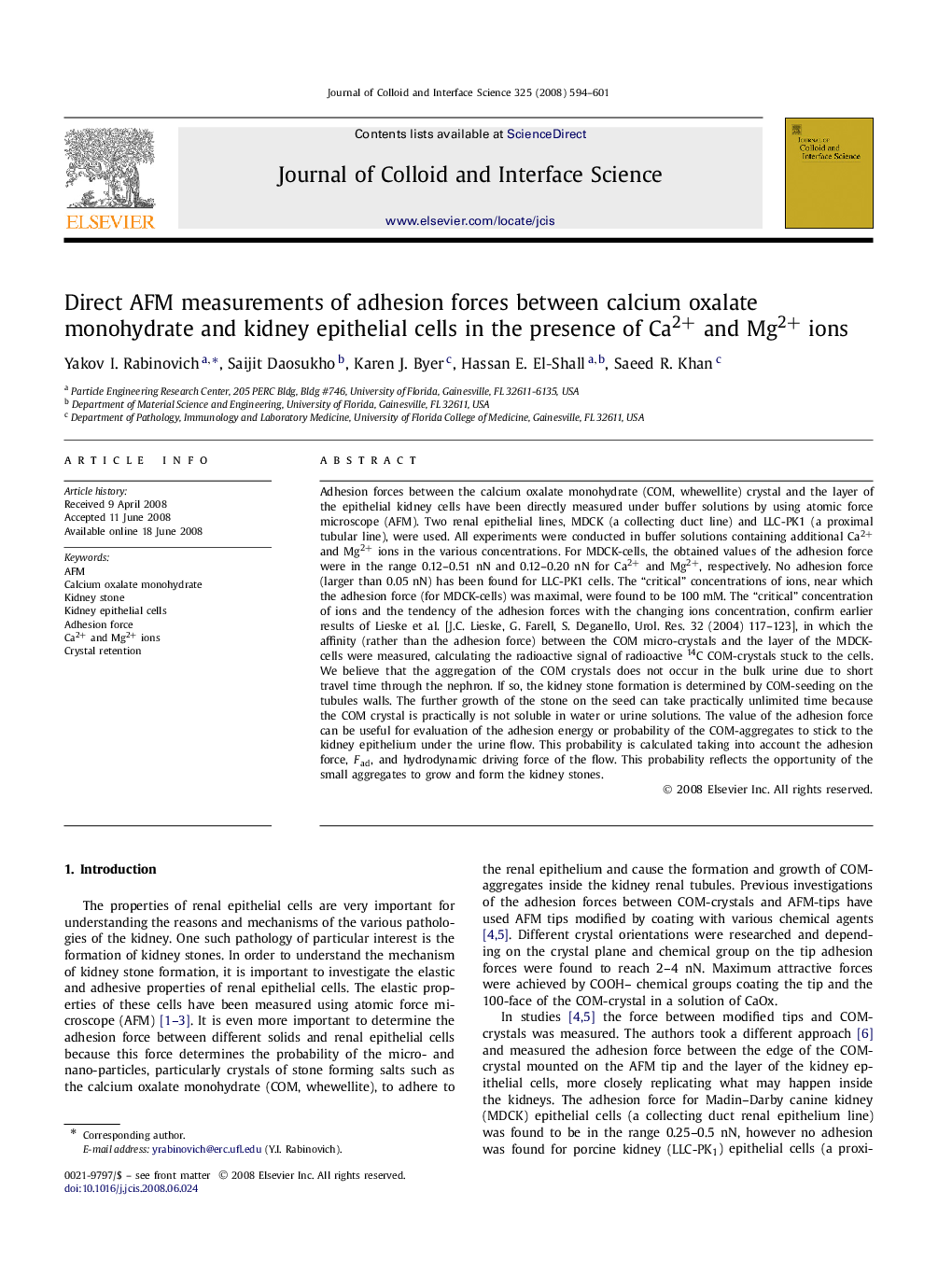| کد مقاله | کد نشریه | سال انتشار | مقاله انگلیسی | نسخه تمام متن |
|---|---|---|---|---|
| 611535 | 880677 | 2008 | 8 صفحه PDF | دانلود رایگان |

Adhesion forces between the calcium oxalate monohydrate (COM, whewellite) crystal and the layer of the epithelial kidney cells have been directly measured under buffer solutions by using atomic force microscope (AFM). Two renal epithelial lines, MDCK (a collecting duct line) and LLC-PK1 (a proximal tubular line), were used. All experiments were conducted in buffer solutions containing additional Ca2+ and Mg2+ ions in the various concentrations. For MDCK-cells, the obtained values of the adhesion force were in the range 0.12–0.51 nN and 0.12–0.20 nN for Ca2+ and Mg2+, respectively. No adhesion force (larger than 0.05 nN) has been found for LLC-PK1 cells. The “critical” concentrations of ions, near which the adhesion force (for MDCK-cells) was maximal, were found to be 100 mM. The “critical” concentration of ions and the tendency of the adhesion forces with the changing ions concentration, confirm earlier results of Lieske et al. [J.C. Lieske, G. Farell, S. Deganello, Urol. Res. 32 (2004) 117–123], in which the affinity (rather than the adhesion force) between the COM micro-crystals and the layer of the MDCK-cells were measured, calculating the radioactive signal of radioactive 14C COM-crystals stuck to the cells. We believe that the aggregation of the COM crystals does not occur in the bulk urine due to short travel time through the nephron. If so, the kidney stone formation is determined by COM-seeding on the tubules walls. The further growth of the stone on the seed can take practically unlimited time because the COM crystal is practically is not soluble in water or urine solutions. The value of the adhesion force can be useful for evaluation of the adhesion energy or probability of the COM-aggregates to stick to the kidney epithelium under the urine flow. This probability is calculated taking into account the adhesion force, FadFad, and hydrodynamic driving force of the flow. This probability reflects the opportunity of the small aggregates to grow and form the kidney stones.
Dependence of adhesion force between COM-crystal and MDCK cells vs Ca2+ (curve 1) and Mg2+ (curve 2) ions concentrations. Curves 3 and 4 are results of [J.C. Lieske, G. Farell, S. Deganello, Urol. Res. 32 (2004) 117–123] in counts per minutes which are proportional to the crystal/cell affinity for Ca2+ and Mg2+, respectively.Figure optionsDownload as PowerPoint slide
Journal: Journal of Colloid and Interface Science - Volume 325, Issue 2, 15 September 2008, Pages 594–601